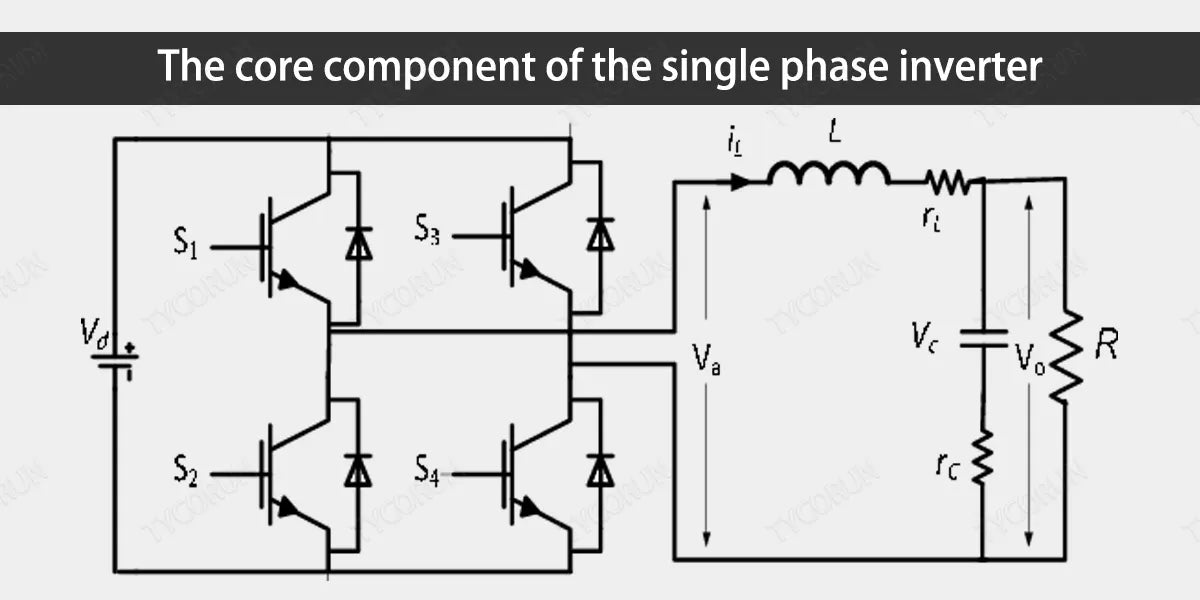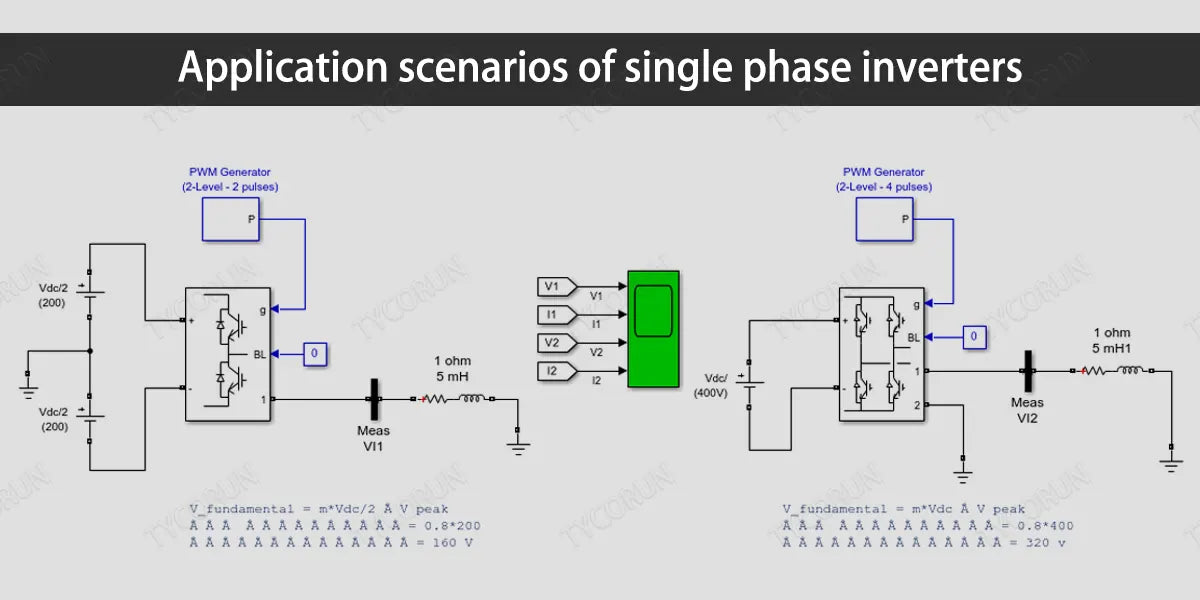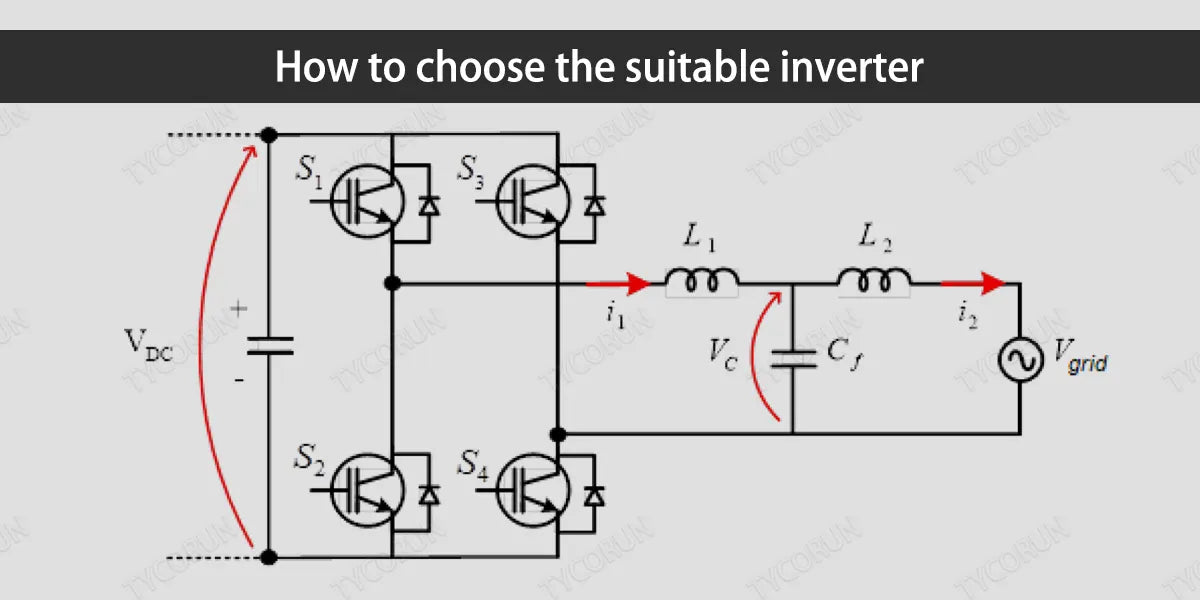
Main content:
1. What is a single phase inverter
A single phase inverter is a power supply unit that converts direct current into alternating current. It is composed of power semiconductor devices and control circuits, which have the advantages of no noise and low radiation, and are widely used in commercial, home energy storage and other fields.
2. The working principle of a single phase inverter
Single phase inverters work by converting direct current into alternating current. Its main components include rectifiers, capacitors, inverters and output transformers.
Direct current is first converted into pulsed direct current through the rectifier, then filtered by the capacitor into smooth direct current, then converted into alternating current by the inverter, and finally adjusted and output by the output transformer. To know the difference between voltage vs current.
3. The core component of the single phase inverter
When it comes to inverters, most people know that these electronic devices can convert different currents, such as direct current to alternating current.
Because most of our household appliances use alternating current, coupled with the popularity of various household appliances, electronic devices such as inverters have become indispensable equipment for every household.
For example, a 10 kw single phase inverter can be said to be one of its core components. It plays a key role in helping 10kW single phase inverters convert alternating current to direct current.
The transformer works in a similar way to a converter. Typically, the technique it uses for extensive conversion is pulse width modulation. This part of the brain acts as command and control.

In addition to transformers, voltage regulators, low voltage protection circuits, and other devices are also common core components of 10 kW single phase inverters.
It is precisely because of the cooperation of these core components that the inverter, a seemingly insignificant electronic device, can play a role that cannot be ignored, thus bringing great convenience to our daily life.
Of course, when we talk about inverters in our daily lives, we are not saying that there is only one inverter. There are many types of inverters that can be used in real life.
For example, square wave inverters, pure sine wave inverters(like pure sine wave inverter 1000w), and other inverters. When consumers buy inverters, they still have to make decisions according to their actual needs.
4. Advantages and disadvantages of single phase inverter
● Advantages
- Small size, easy to install and move.
- The price is relatively low.
- Stable performance, suitable for home or small business applications, relatively small power output.
- The internal electronic components are carefully designed and optimized for long service life and reliability.

● Shortcoming
- The output power is limited and cannot meet the needs of high power loads.
- Low efficiency, energy conversion has energy loss, and efficiency is not as good as direct use of alternating current.
- Installation and commissioning are relatively simple and suitable for household and small commercial use.
- When the light is insufficient or the temperature is too high, the output power of the inverter will be limited.
- The cost is relatively high, and advanced electronic components and control technology are used.
5. Application scenarios of single phase inverters
Single phase inverters have the advantages of being small, light, and easy to install, so they are widely used in households, businesses and other fields.

For example, the inverter in the high efficiency solar panels power generation system can be used in the home to power the power of home appliances such as TVs, refrigerators, vacuum cleaners, etc., and can also be used to power the power supply of computers, printers, digital cameras and other business equipment.
6. How to choose the suitable inverter
① The main indicators of the inverter
● Voltage input
12V DC is used by household cars, 24V DC is used by trucks, and many power tools use 21V DC, mobile phones are generally 5V DC, according to their own needs to choose the appropriate voltage.
● Current
If the selected voltage is smaller, it means that under the same power, the current requirements are higher, you need thicker wires, stronger resistors, protectors, transformers, etc., which means the higher the cost.
● Voltage output
There are two kinds of voltage output, one is square wave, one is sine wave, sine wave is better than square wave, generally choose sine wave inverter, of course, you can also directly output different DC voltages through the boost or buck module.

● Power
Families generally choose in the range of 200w-8000w, 200w for what small household appliances to use, such as small fans, mobile phone charging, etc. If it is used outdoors, it is recommended to be more than 2000w(2000 watt inverter).
② Inverter purchase principle
Choose a real standard inverter, if you can't do this, you don't fantasize about what cost performance for the rest.
- Preferred famous inverter, with good after-sales service, complete instructions and excellent workmanship.
- Choose inverters with large shipments and good evaluation.
- Choose an inverter with high-cost performance.
- Choose a heavy inverter.
- Modified wave inverters are cheap, but it is recommended to buy a sine wave inverter.
7. Conclusion
Through this article, we can understand the basic concept, working principle, application scenarios, and advantages and disadvantages of single phase inverters.
As a beginner, if you understand the principle of single phase inverter, it is easier to understand its application. You can also learn about the selection tips, you can try to contact us for more professional guidance and help.
If you want to want more information about Tycorun inverters, please check our power inverter 3000w pure sine wave, power inverter 2000w, 1000w pure sine wave power inverter, price of 500 watt inverter
Related articles: Top 5 home energy storage companies, top 10 PV inverter companies, energy storage inverter